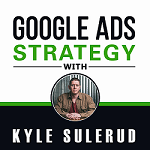In this post, I’ll be sharing a simple advertising framework that you can use to put together a great YouTube ad. This framework comes to us from a book published in 1962 titled ‘How To Write A Good Advertisement’ written by Victor Schwab.
Obviously, a book written 60 years ago was not written specifically about YouTube Ads. Instead, it was written about print advertisements. In case anyone is reading this who is under 20 years old, YouTube was not around in 1962… BUT, the information is so good and so timeless that it still applies today in the context of YouTube advertising.
In the opening sentence of the book, Schwab writes, “The advertisement itself is the keystone in the arch of sales. Most sales difficulties actually hark right back to impotent advertisements.”
Of course, nobody wants sales difficulties or impotent advertisements, so let’s see how we can give our advertisements a lift by following Schwab’s five-part framework.
1.Get Attention
This is the hook. When you are running YouTube Ads, you are an uninvited guest. People would rather keep watching the YouTube video they were watching than start watching something new from you, the uninvited guest. Nobody watching YouTube videos asked you to be there. You had to pay to get in. If you don’t want to be kicked out and you don’t want your potential customers skipping your ad right away, then you need to make it easier for them to watch your ad than to skip it.
You should strive to offer the viewers something so good, that it’s basically a reward for them not skipping your ad. This reward can be entertainment, information, or both. It just so happens that those are the two reasons people are on YouTube in the first place.
This section of his book sums up the ‘Get Attention’ part of Schwab’s framework, “There are two principal attributes of good headlines. They select, from the total readership of the publication, those readers who are (or can be introduced to be) interested in the subject of the advertisement. And they promise them a worthwhile reward for reading it.”
As you can see, way back in 1962, Schwab was talking about the importance of a hook that captured the attention of your target customer and prevented them from skipping your ad.
2. Show People An Advantage
In relation to the 12 YouTube ad elements I’ve written about, ‘Show People An Advantage’ is what you’re doing if you use the ‘Provide Benefits’ element. The big question to answer is, “What will it do for me?” People are motivated by pleasure and pain. A benefit can be something good that the viewer can gain – some type of pleasure or accomplishment.
Schwab calls this a ‘Plus Generalization’. A benefit can also be something bad that the viewer wants to avoid, reduce, or eliminate. Schwab calls this a ‘Minus Generalization’. This section of the ad can provide one benefit, either a plus or a minus. Or it can provide multiple pleasure-gaining benefits or multiple pain-avoiding benefits, or some combination of the two.
Now, the ‘Provide Benefits’ element isn’t the only YouTube ad element that you can use to show people an advantage. You can also show an advantage by using the ‘Tell Your Story’, the ‘Share Your Results’ element, or the ‘Share Student Results’ element.
3. Prove It
If you are sharing your results or you’re sharing the results of students or customers, then the proof is already built-in. You could also tell your story with proof of the advantage built into your story. One thing to note here is that this framework doesn’t need to follow this exact sequence.
You don’t need to show people an advantage and then prove it. You can include proof throughout your ad, even in the hook. Another way to prove it is with the ‘Teach Something’ element. Like Frank Kern always says, “You should show people you can help them by actually helping them.” If you can help someone by teaching them something of value, then that might be all the proof they need.
4. Persuade People To Grasp The Advantage
This is a continuation of the ‘Show People An Advantage’ section and you’re actually going to be using the ‘Provide Benefits’ element here too.
The key to this section is that it happens immediately before the ‘Ask for Action’. This is the clincher. To quote Victor Schwab, “You picture the benefits in motion in the daily lives of people reading your copy. You sum up your sales story. You paint a quick and summarized mind’s eye portrait of what the product will do for the reader, and how easy it is for him to get it.”
One way to implement this could be switching from pleasure to pain. If most of your ad is about gaining pleasure, then maybe you switch at the end to talking about something the viewer will lose if they don’t take action. You could introduce something new like a powerful benefit related to what you’ve been talking about or you could restate your strongest selling point or refer back to the hook. This is where you can add some urgency and even change your tone to drive home the importance of what you’re offering.
5. Ask For Action
If you haven’t presented your offer yet, you’ll do that here. Of course, you’ll have a call to action.
To sum up this YouTube ad formula from 1962, get attention, show people an advantage, prove it, persuade people to grasp the advantage, ask for action.
Thanks, Victor Schwab! Check out his book, ‘How to Write a Good Advertisement if you want to go a lot deeper into this material.
Remember, this obviously isn’t the only framework you can use for YouTube Ads though!
